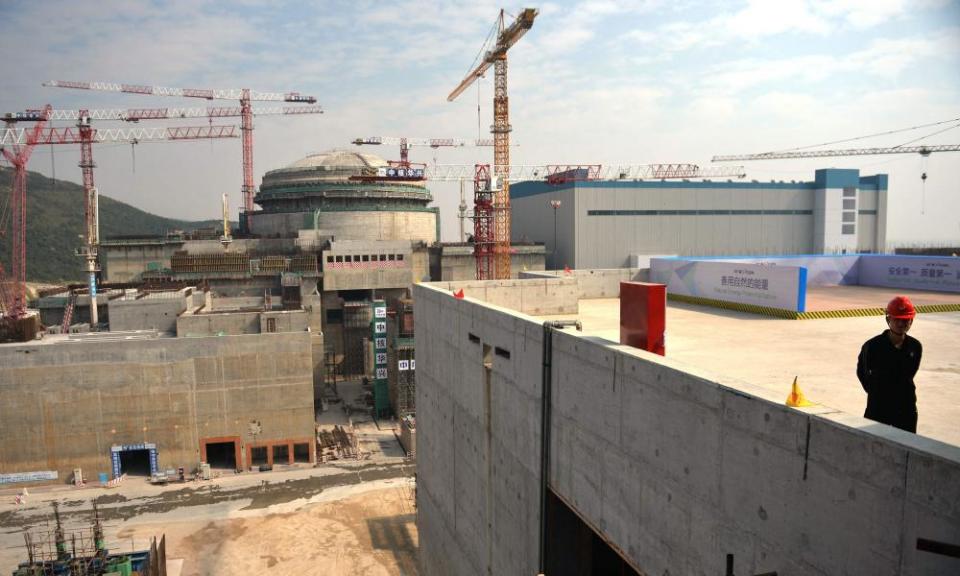French nuclear firm trying to fix ‘performance issue’ at China plant

A French nuclear company has said it is working to resolve a “performance issue” at a plant it part-owns in China’s southern Guangdong province after an earlier report of a potential leak there.
Framatome, a subsidiary of the energy giant EDF, told Agence France-Presse news agency that it was “supporting resolution of a performance issue” at the plant. “According to the data available, the plant is operating within the safety parameters,” it said, adding that an extraordinary meeting of the power plant’s board had been called “to present all the data and the necessary decisions”.
The statement came shortly after the US TV network CNN reported that Framatome had previously warned the US energy department of an “imminent radiological threat” in a letter.
According to CNN, the letter included an accusation that the Chinese safety authority was “raising the acceptable limits for radiation detection outside the Taishan nuclear power plant in Guangdong province in order to avoid having to shut it down”.
China’s state-run China General Nuclear Power Group said on Sunday that operations at its nuclear power station in south China met safety rules and the surrounding environment was safe. A US official told CNN “the Biden administration believes the facility is not yet at ‘crisis level’”.
EDF later said there was an “increase in the concentration of certain noble gases in the primary circuit of reactor No 1” at Taishan, referring to a part of the cooling system.
Noble gases are elements like argon, helium and neon, which have low chemical reactivity. Their presence in the system “is a known phenomenon, studied and provided for in the reactor operating procedures”, EDF said.
Radiation levels in Hong Kong, 85 miles from the Taishan plant, were normal on Monday, according to the Hong Kong Observatory, which monitors radiation around the city.
Powered up in 2018, the Taishan plant was the first worldwide to operate a next-generation EPR nuclear reactor, a pressurised water design that has been subject to years of delays in similar European projects in Britain, France and Finland.
There are now two EPR power units at the plant in the city of Taishan, which sits close to the coastline of southern Guangdong – China’s most populous province. EPR reactors have been touted as promising advances in safety and efficiency over conventional reactors while producing less waste.
Nuclear plants supplied less than 5% of China’s annual electricity needs in 2019, according to the National Energy Administration, but this share is expected to grow as Beijing attempts to become carbon neutral by 2060.
China has 47 nuclear plants with a total generation capacity of 48.75m kilowatts – the world’s third highest after the US and France – and has invested billions of dollars to develop its nuclear energy sector.
Last month, the Russian president, Vladimir Putin, and his Chinese counterpart, Xi Jinping, hailed close ties between their countries as they launched work on Russian-built nuclear power plants in China.
And in December, state media reported that China had successfully powered up its “artificial sun” nuclear fusion reactor for the first time, the HL-2M Tokamak reactor, which uses a powerful magnetic field to fuse hot plasma and can reach temperatures of more than 150m C.
It is China’s largest and most advanced nuclear fusion experimental research device, and scientists hope the device can potentially unlock a powerful clean energy source.
Agence France-Presse and Associated Press contributed to this report

 Yahoo News
Yahoo News 